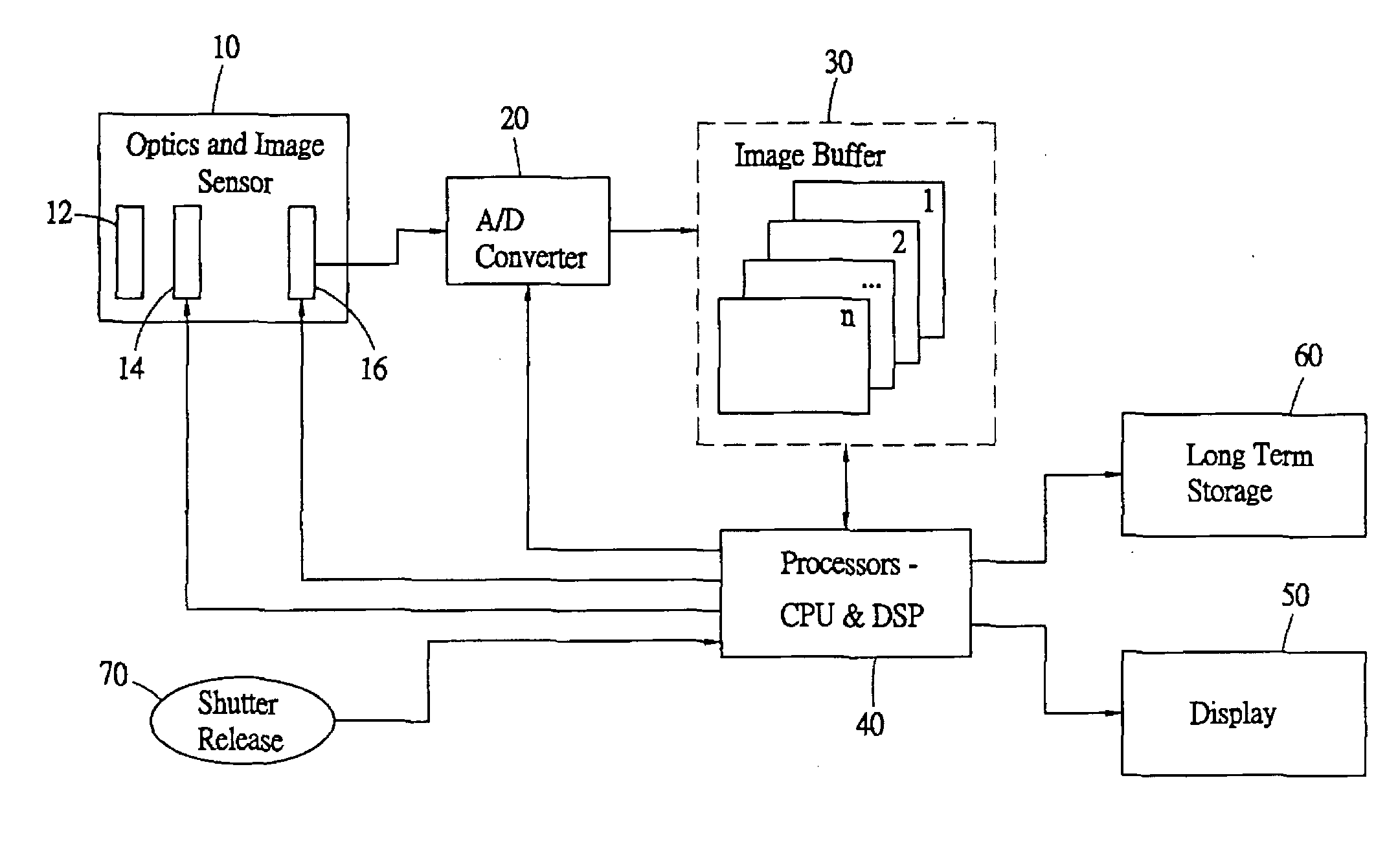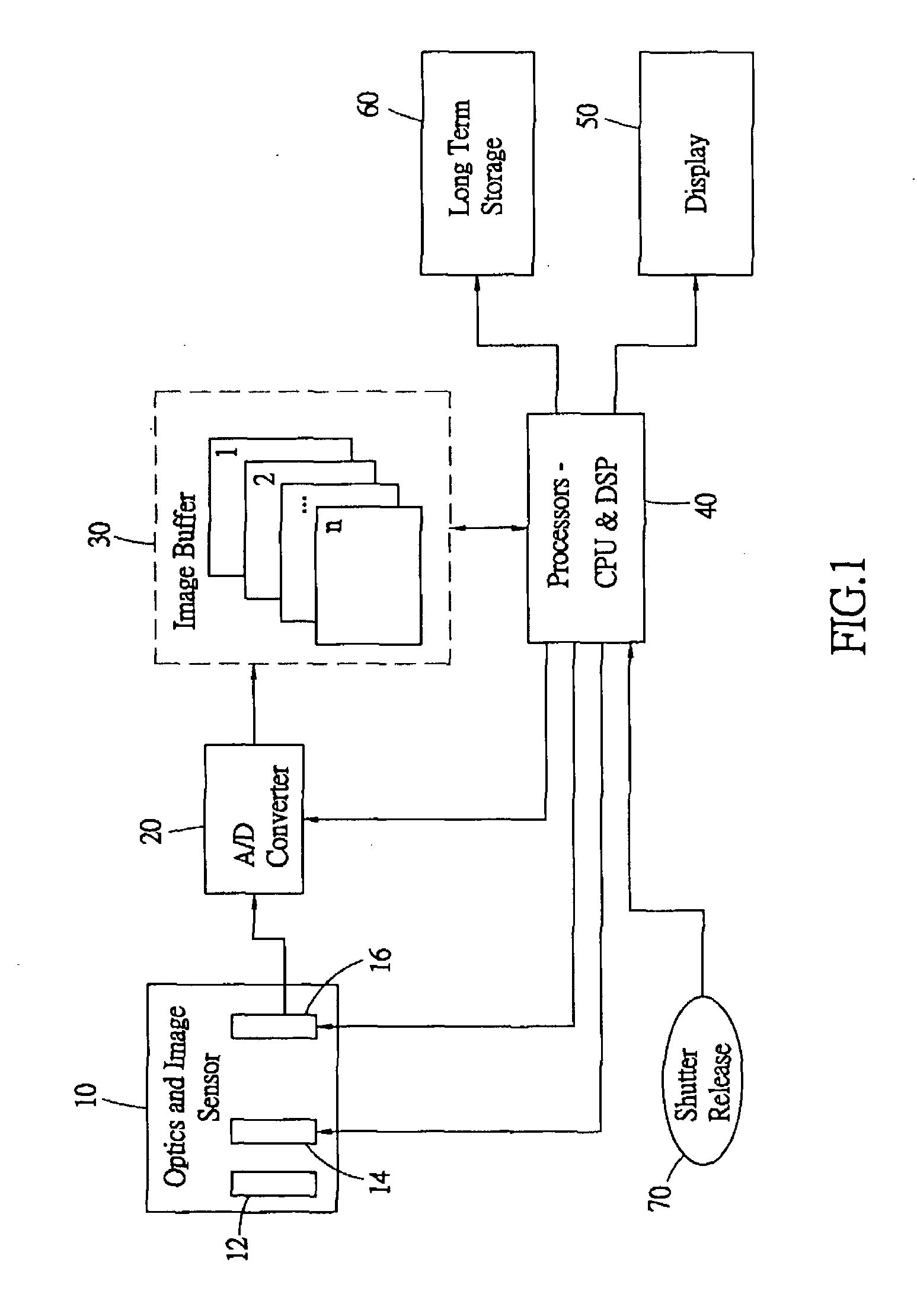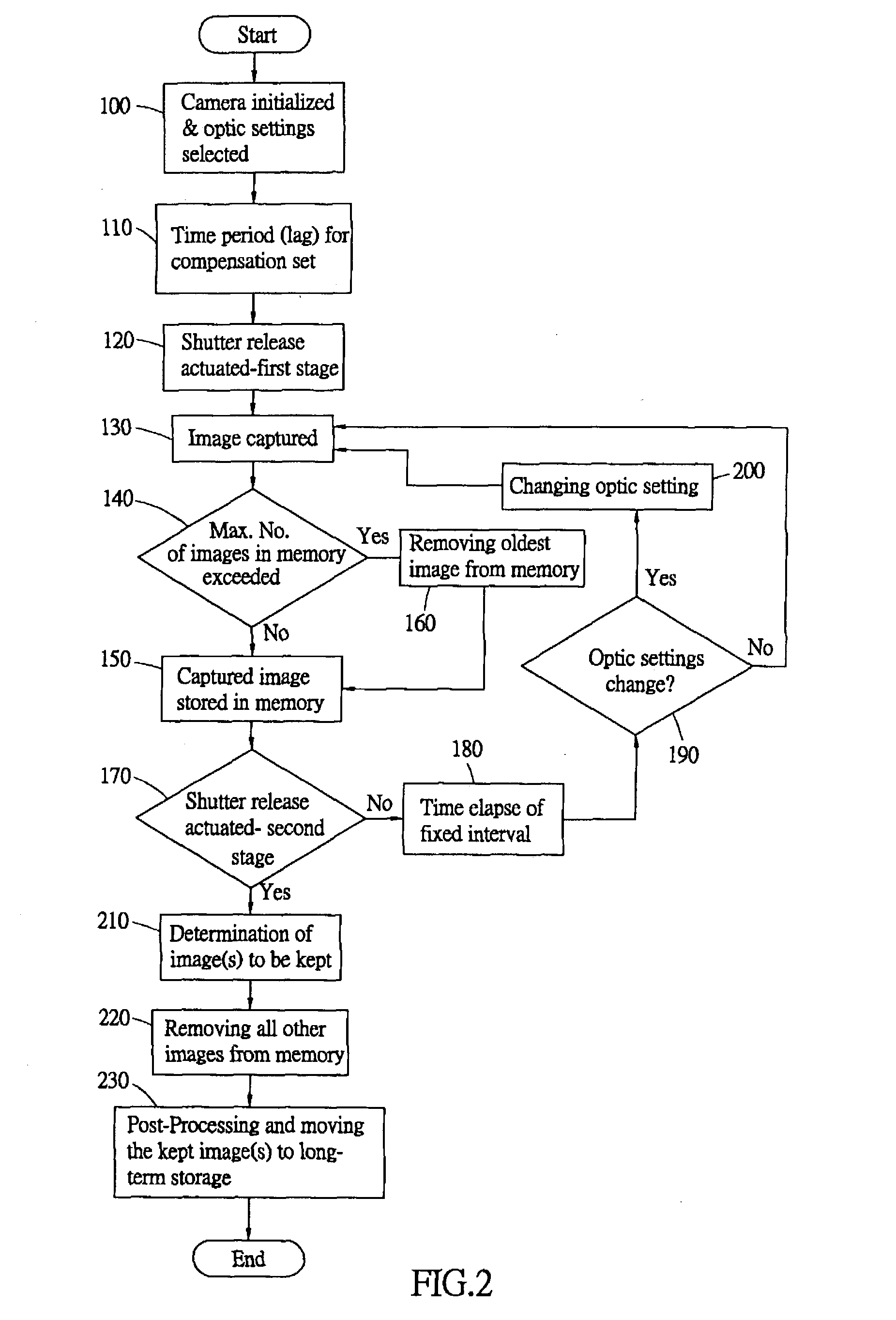Compensating for delays inherent in digital still camera imaging
a technology of digital still camera and compensation, applied in the field of electronic still imaging, can solve the problems of difficult to accurately time the photograph, often too late capture of the image, and simply missed shots
- Summary
- Abstract
- Description
- Claims
- Application Information
AI Technical Summary
Benefits of technology
Problems solved by technology
Method used
Image
Examples
Embodiment Construction
[0018] An overview of the architecture of a digital still camera will be given first before the present invention is explained in detail. Electronic still cameras employing area image sensors, such as Charge Coupled Device (CCD) or Complementary Metal-Oxide Semiconductor (CMOS), are well known. The description is therefore directed in particular to the elements involved in, or cooperating more directly with, the operation of a digital camera performing a method in accordance with the present invention. Elements not specifically shown or described herein may be selected from those known in the art and details thereof will not be given.
[0019] Referring to the drawings and in particular to FIG. 1, an electronic still camera comprises generally an optics and image sensor section 10 for directing image light from a subject (not shown) toward an image sensor 16. The optics and image sensor section 10 comprises optics 12 that may be conventional and known to those having ordinary skills in...
PUM
 Login to View More
Login to View More Abstract
Description
Claims
Application Information
 Login to View More
Login to View More - R&D
- Intellectual Property
- Life Sciences
- Materials
- Tech Scout
- Unparalleled Data Quality
- Higher Quality Content
- 60% Fewer Hallucinations
Browse by: Latest US Patents, China's latest patents, Technical Efficacy Thesaurus, Application Domain, Technology Topic, Popular Technical Reports.
© 2025 PatSnap. All rights reserved.Legal|Privacy policy|Modern Slavery Act Transparency Statement|Sitemap|About US| Contact US: help@patsnap.com



